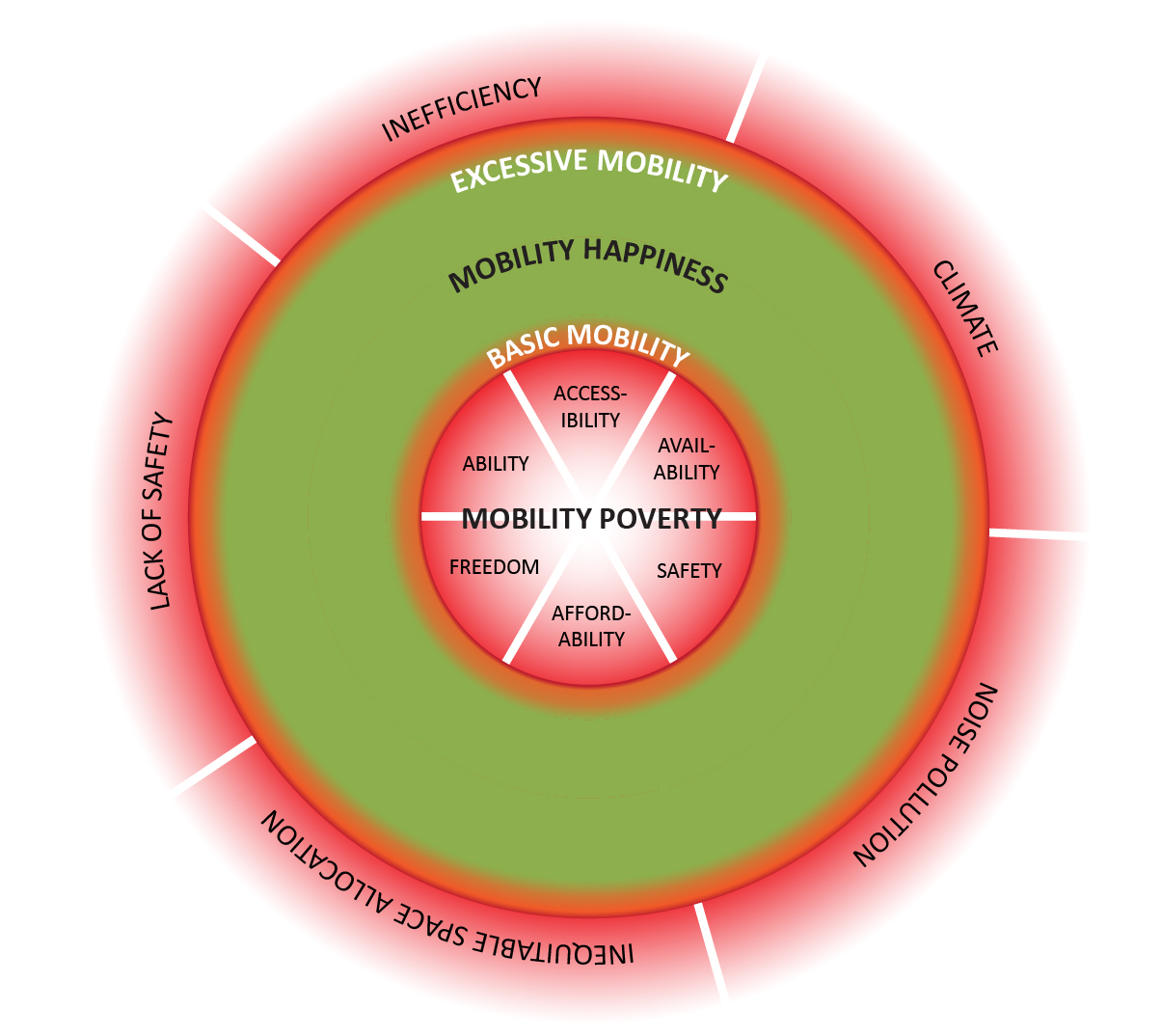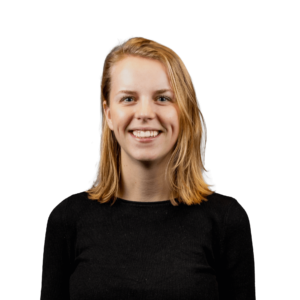Innovation
The elements of the Mobility Donut: Finding the balance
In the field of mobility, increased attention is being placed on people rarther than simple places or modes. Not only for the people who are already travel regularly, but also for the people who do not but would like or need to be. We also see that mobility is having an increasingly negative impact on the quality of build and natural environments, air quality, noise levels, and, of course, our climate. At the same time, the number of people becoming mobile is increasing at a growing rate, with more people using our systems than ever.

In the previous blogs, we introduced three currently relevant and important concepts in the world of mobility:
What strikes us is a clear connection between these concepts. In this final blog of the series, we discuss how we have captured this connection in our Mobility Donut, inspired by the concepts presented in Doughnut Economics, developed by Kate Raworth.

The Mobility Donut
In Raworth’s Doughnut Economics, we see a parallel with the theme of mobility. For people who already have transport options, even more options are being created, or efforts are being made to enable them to reach their destinations more quickly and comfortably, contributing to Excessive Mobility. At the same time, there are children in the Netherlands who cannot participate in certain school activities because, due to external conditions like income or education, they do not own a bicycle. In these instances, it becomes clearer that mobility is unevenly distributed in society.
New assessment frameworks
The national ambition for mobility in the Netherlands, like in many other nations, is a safe, robust and sustainable mobility system. This focuses on the user and their door-to-door journey and has a minimal impact on the living environment (as described in the Schets Mobiliteit naar 2040 (Mobility Sketch 2040 – in Dutch). But the current instruments and assessment frameworks are not enough. They focused heavily on the outside of the Mobility Donut, those who are already mobile. With the aid of the Mobility Donut, we are therefore looking for new assessment frameworks. Through the elements of mobility poverty, mobility happiness and excessive mobility, we help give our clients a push in the right direction in order to work on creating a better balance. Essentially, where should we focus our energy when it comes to mobility?
__________________________________________________________________________________________________
The Mobility Donut is a balancing act between a social foundation for mobility and the limits of the earth’s ecosystem. What falls on the outside of the donut is too much: excessive mobility. This can lead to damage and high costs for the environment. On the inside of the donut, ‘basic mobility’ is the limit. When a person falls below this limit, this is called mobility poverty and has negative results for the individual and for society as a whole. The time, money, space and energy that we spend on the ‘too much’ is no longer available for the inside of the Mobility Poverty Dot. As a result, the problem of mobility poverty remains.
__________________________________________________________________________________________________
Finding the balance
We want to move towards mobility that fits within the boundaries of the Mobility Donut. Where the donut is in balance. What is needed to achieve this? First and foremost, a mind shift needs to happen from only using quantitative approaches that focus heavily on solving mobility and traffic issues for those who are already on the road (see excessive mobility). Instead, attention should be shifted to giving more attention to issues such as mobility poverty, the excessive use of mobility, instruments that contribute to mobility happiness and more qualitative approaches that help shape mobility policy.
Where exactly the boundaries of the Mobility Donut lie depends on the experience of the individual traveller. Perhaps someone is unable to travel outside his or her neighbourhood or has no need to do so because the facilities they need and their social contacts are within walking distance. At Mobycon, this is why our approach is aimed at putting the traveller first because there is no one-size-fits-all solution. We are all too aware that the limits of the donut also depend on social norms and are largely determined by political choices.
With the Mobility Donut, we want to create awareness about the existence of the donut’s boundaries and the influence of certain choices on them. In this way, we are aiming to bring mobility into balance. If our society remains within the boundaries of the Mobility Donut – in the space dedicated to mobility happiness – we can speak of a mobility-loving society. A future-proof mobility system where as many people as possible are able to meet their mobility needs within the available networks and resources, all without overstepping the boundaries of our society. That is what we stand for and strive for at Mobycon!
Getting started with the Mobility Donut!
We have set out the ideas behind the Mobility Donut in our position paper (see pdf below – in Dutch). Now it’s time to get to work! Using the donut as a starting point, we engage in a dialogue between administrators, residents and employees of various policy areas. We are also using the Mobility Donut as an assessment framework when drawing up mobility programmes. Our goal is to use it to create an environment of understanding, collaboration and cooperation between different stakeholders. To facilitate this, we are currently developing an interactive Mobility Donut Game. If you are you curious about this game or would you like to contribute, please contact Babet Hendriks.
__________________________________________________________________________________________________
This blog is the final part of a series of four entries focused on the Mobility Donut. In each, we examined an element as experienced through our work and the mobility experience in the Netherlands. We developed this concept based on the ideas presented in Doughnut Economics, created by economist Kate Raworth. The Mobility Donut links mobility poverty, basic mobility, mobility happiness and excessive mobility. We are currently developing the Mobility Donut Game to help our clients find the balance in mobility policy. Interested? Please contact Babet Hendriks.
 ">
">Mirjam de Bok
‘The influence of mobility on our society is enormous. I believe that people, rather than cars, should be the focus of attention when we are designing public space and mobility policies. That is why I strive to take an integrated approach to mobility issues while keeping the human factor in mind. In this way, we can achieve a society that is less dependent on the car.’

